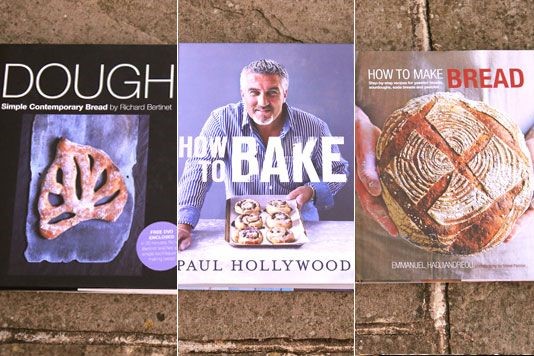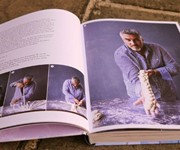The experts' guide to bread making - Paul Hollywood

In the first of a new series, Laura Rowe explores the methods of top bakers (old and new) to discover who is best placed to teach us all we need to know about bread.
The TV cook: Paul Hollywood How to Bake
The cuddly badger of baking might be best known nowadays for judging Great British Bake Off on BBC2 but in “real life”, for the past three decades, Paul has been baking in some of the UK’s top kitchens. His first book 100 Great Breads received mixed reviews but his latest book How to Bake, published by Bloomsbury, is definitely worth considering: a whole 159 pages are dedicated to the humble loaf.
Hollywood takes us through the different types of flour in surprising detail. Did you know that strong white bread flour has a protein level (i.e. gluten) of 11-13%, while rye has less than 10%, for example? Or that, you should bake a spelt loaf in a tin to stop it spreading outwards? He also takes us through yeast (Hollywood surprisingly recommends using instant/fast-action rather than fresh but annoyingly says to use 10g per 500g flour, when most packs come in 7g sachets). He also recommends using cool water (around 15ºC) and a maximum of 20ºC for recipes that require ‘tepid’ water as “slower-rising dough [...] will taste better”.
 Techniques are also given the same level of detail with step-by-step images of Paul mixing, kneading, letting the dough rise, knocking it back, and shaping the dough. You even get four pictures of that infamous eight-strand plait that defeated even the best bakers on GBBO. He’s not snobby about electric mixers with a dough hook – in fact he says all of his recipes work with one and even recommends using one for particularly wet and sticky doughs. Hollywood also recommends adding olive oil rather than flour to the worksurface to help aid kneading.
Techniques are also given the same level of detail with step-by-step images of Paul mixing, kneading, letting the dough rise, knocking it back, and shaping the dough. You even get four pictures of that infamous eight-strand plait that defeated even the best bakers on GBBO. He’s not snobby about electric mixers with a dough hook – in fact he says all of his recipes work with one and even recommends using one for particularly wet and sticky doughs. Hollywood also recommends adding olive oil rather than flour to the worksurface to help aid kneading.
They key theme though, that is repeated throughout the book, is dedicating time to your loaf. Don’t cheat or shortcut with proving – the longer the better, he says – it is ready when you can gently press the dough and it springs back. Hollywood also recommends creating steam in the oven (via a tray of water) to create a “crisp, light crust and slight sheen”.
In terms of equipment Hollywood starts to get pretty technical – there is talk of heavy baking stones (if you bake a lot), scotch scrapers, peels, electric mixers and dough thermometers. There are then recipes for everything from a basic white tin bread to soda bread, a wholemeal loaf and wraps, pittas and chapatis, barms and baguettes, a malted loaf, spelt loaf, ciabatta, focaccia, flavoured and sweet breads, and more.
Then, impressively there is a whole new chapter on the holy grail of bread ‘sourdough’, with a page of “secrets” such as (shhhh...) leaving the ‘starter’ (a mix of water, flour and grated apple) in an ambient temperature of 20-24ºC away from draughts; and being economic with the water content for the final dough. There are then 14 different types of sourdough to be made.
While Hollywood might go a bit too in-depth for the amateur baker in some parts, at the same time he makes the whole process feel very accessible. There are always options – for example a dough can be kneaded by hand or in a machine, a loaf can be cooked in a gas, electric or fan oven. You can almost hear his dulcet northern tones, too, as you read the recipes, so you feel like he is almost there with you. All rise for the baking badger!
Previous: ...Richard Bertinet's 'Dough'
Next: Emmanuel Hadjiandreou's 'How to Make Bread'...
Comments
Be the first to comment
Do you want to comment on this article? You need to be signed in for this feature